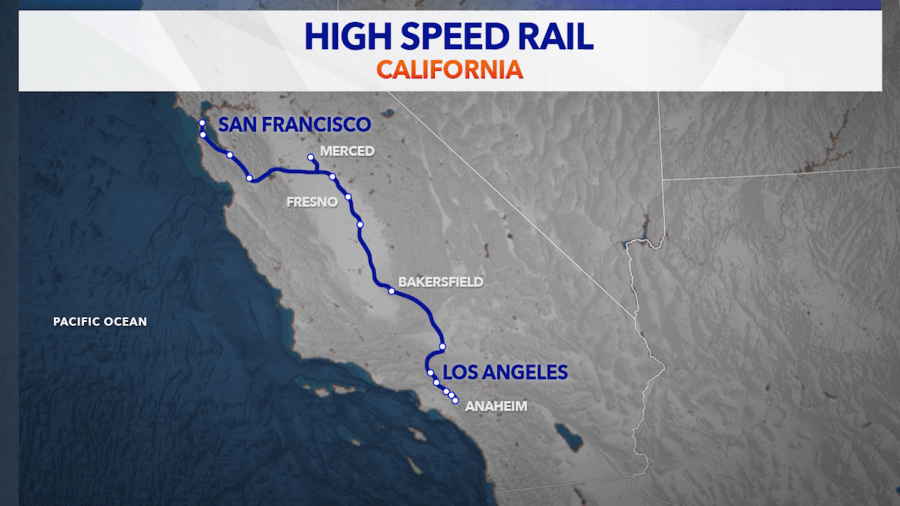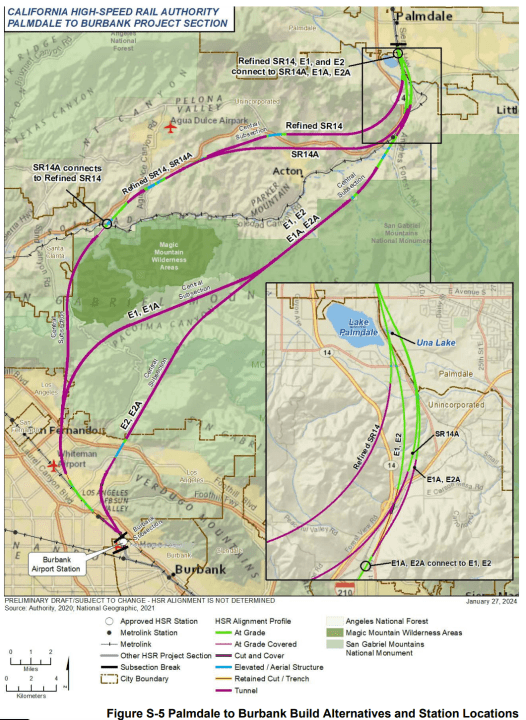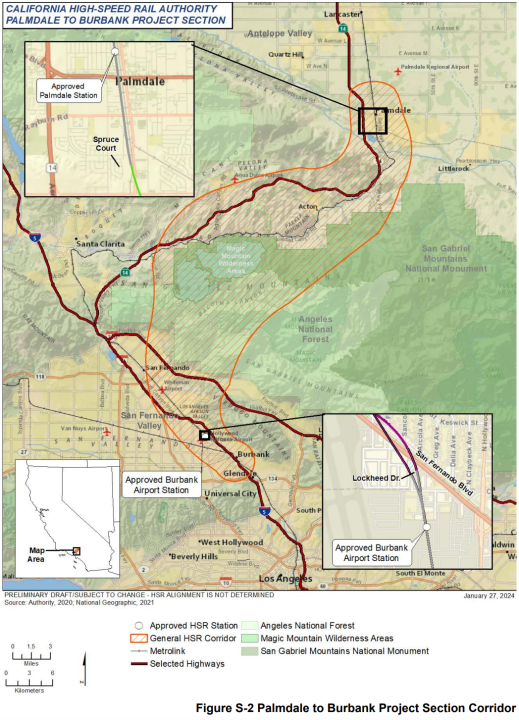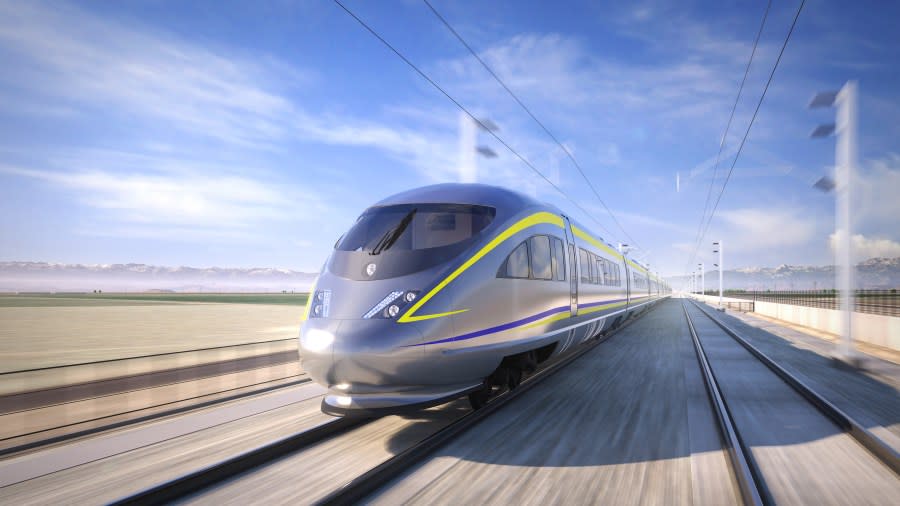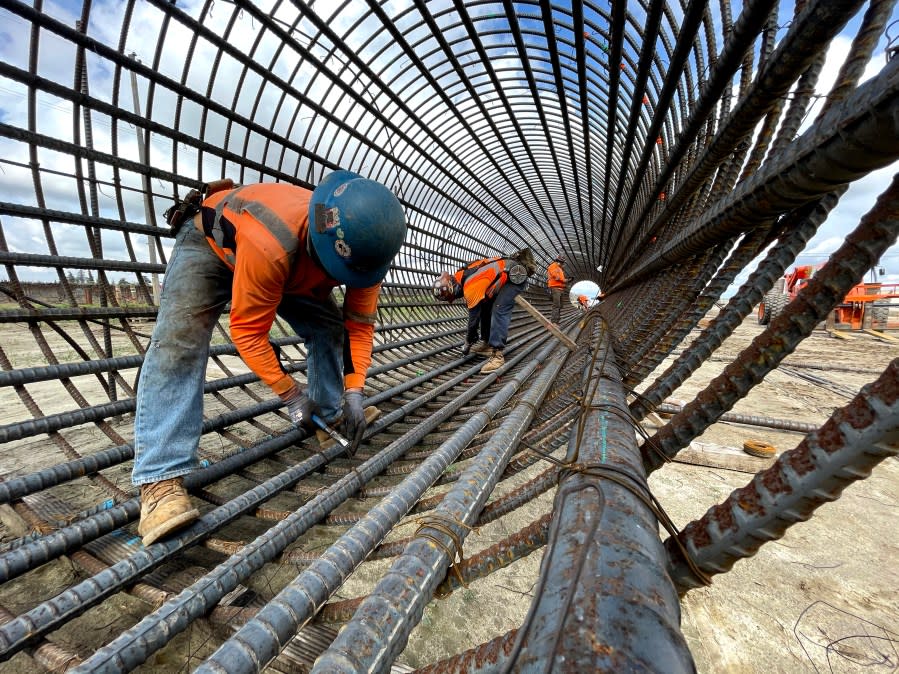Full environmental approval of High-Speed Rail between L.A. and Bay Area expected next month
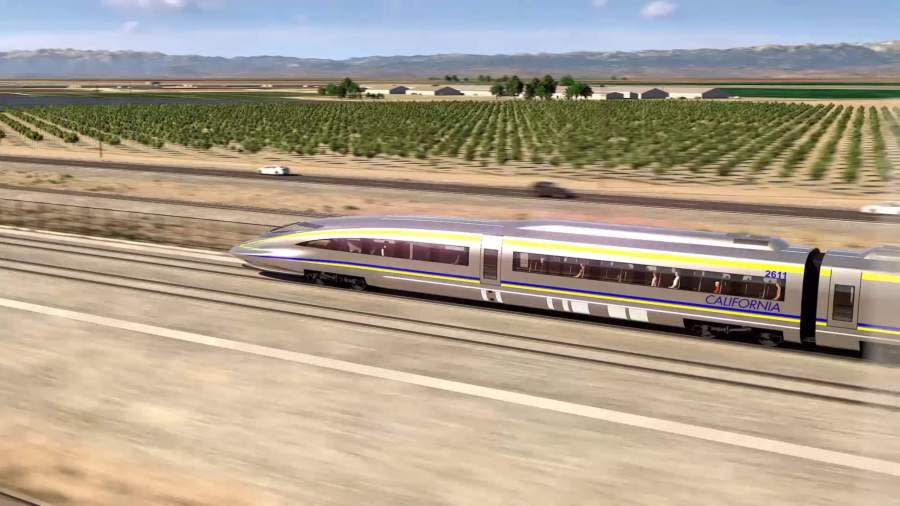
In what is arguably the biggest milestone in the mission to connect Los Angeles and San Francisco by bullet train, the California High-Speed Rail Authority is expected to submit final plans to obtain complete environmental approval between the two cities. On Friday, the Authority announced it would submit its final environmental impact report for the segment connecting Palmdale to Burbank, which is the last section yet to achieve environmental clearance.
The document is expected to be presented to the Authority’s board of directors in June and will include an analysis of all six build alternatives, as well as one “no project” option.
“This environmental document is the culmination of years of analysis and stakeholder engagement and is a huge milestone in connecting high-speed rail between two of our major metropolitan centers,” said Brian Kelly, CEO of the California High-Speed Rail Authority. “If our Board of Directors approves this document and the proposed project at their summer Board meeting, we will have environmentally cleared 463 of the 494-mile Phase 1 system between the Bay Area and Los Angeles/Anaheim.”
Palmdale to Burbank is one of the most complex and challenging portions of the California High-Speed Rail project. It requires boring out some of the longest tunnels ever constructed through some of the most mountainous terrain along the entire system.
California High-Speed Rail has created 13K labor jobs, Authority says
The preferred route would include four tunnels covering about 28 miles, one 13 miles long and another 12 miles long.
The majority of the path would be underground, passing under the town of Acton, through large swaths of the Angeles National Forest and much of the San Gabriel Mountains National Monument, officials said, adding that the tunnels would limit the overall impact to local communities and nearby wetlands.
This figure shows the alternatives considered for the Burbank-to-Palmdale section of the California High-Speed Rail, including sites for proposed stations. (CAHSR) A figure showing he California High-Speed Rail Authority’s Palmdale-to-Burbank corridor is featured in the latest environmental impact report for the project. (CAHSR)
The Palmdale station will be located adjacent to the existing transit center on Clocktower Plaza Drive and the Burbank station will be located underground at the Hollywood Burbank Airport — which will be undergoing massive renovations in the coming years, with plans to open a new terminal in 2026.
CAHSR officials say the travel time between the two stations will be about 20 minutes. Express trains that skip both stops will cover that ground even faster.
The L.A.-to-San Francisco service is the most high-profile and highly anticipated part of the system. It comprises the majority of what’s known as “Phase 1” of the massive statewide transit project.
When completed, electric trains capable of reaching up to 220 mph will whisk riders between Los Angeles Union Station and Salesforce Transit Center in downtown San Francisco. Currently, only bus service operates out of San Francisco’s downtown transit hub, but a recent $3.4 billion federal grant will be used to help connect the station with the regional passenger rail service Caltrain — a project known as “The Portal.”
What’s the difference between California’s 2 high-speed rail projects?
While getting environmental clearance between the state’s two most significant economic and cultural hubs would be a landmark accomplishment, one portion of Phase 1 still needs to be cleared: the segment between Los Angeles and Anaheim.
That 33-mile segment will have to deal with existing infrastructure between the two Southern California cities, leaving little room for new construction. The current plans call for four tracks, two for freight and two for passenger rail, to be built between the two cities.
Los Angeles to Anaheim is expected to take about 45 minutes, well short of the project’s “high-speed” promise – in large part because there are multiple interchanges where rail lines will meet with roads.
The Authority says it expects to get that segment approved, thus clearing all environmental hurdles within Phase 1, by next year.
When construction will actually begin in Los Angeles County remains uncertain as current work is being focused on the “Initial Operating Segment,” which will connect Merced to Bakersfield in the Central Valley.
Construction is currently underway along 119 miles of that segment, and the Authority is working to extend the current construction zone to 171 miles. That segment is expected to be up and running by the early 2030s.
In the Bay Area, the vast majority of work needed to complete the section between San Francisco and San Jose is already completed, officials said. The Authority opted to work with Caltrain to electrify those tracks and share them in a “blended system.”
If and when Phase 1 is ever completed, the Authority has previously discussed extending the system to Sacramento in the north and San Diego in the south as part of the project’s Phase 2.
But in April, Jim Patrick, director of communications for the Authority’s Southern California operations, told KTLA sister station FOX 5 in San Diego that planning of Phase 2 is largely on pause as the initial operating segment and Phase 1 are still massive undertakings that require the full attention of the state. Existing plans will also likely have to be restarted from scratch as they are more than 15 years old and are heavily outdated.
California High-Speed Rail one step closer to acquiring nation’s first 220 mph trains
“We’re trying to build this project the right way and it wouldn’t be right to plug along as if no time has passed,” Patrick said in an email to KTLA.
If Phase 2 ever becomes a reality, the California High-Speed Rail would have a service area of more than 800 miles.
The Board of Directors meeting to approve the final environmental impact report for Palmdale-to-Burbank will take place over two days beginning on June 26. It is expected to be approved.
The public can view the board meeting either in person or online. Copies of the environmental impact report can be found online or at local CAHSR offices.
Copyright 2024 Nexstar Media, Inc. All rights reserved. This material may not be published, broadcast, rewritten, or redistributed.
For the latest news, weather, sports, and streaming video, head to KTLA.
